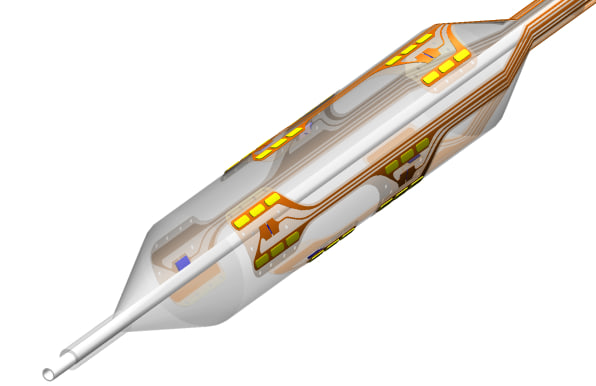What Channel Does Gold Rush Come on Directv
About 1 in 3 Americans suffer from some level of hypertension. Some of them can control their blood pressure problems through medication, but for those who can't, renal denervation is a promising new technique that's getting an incredible amount of buzz in the health (and venture capital) community.
The procedure is relatively simple: A catheter enters the renal artery and burns out a bit of nerve tissue around the artery walls, thwarting overactive signals coming from the kidneys that throw the body into blood pressure hyperdrive. One early clinical trial has shown that, over three years, 100% of patients with severe hypertension were apparently cured by the technique. And for most, results took a mere six months of treatment.

Yet despite all this interest and potential, there's just one company that makes a renal denervation device (which is approved for Europe and undergoing FDA testing now). Their name is Ardian, a they were recently acquired for about $1 billion.
Subsequently, the field has been labeled a "gold rush" with anywhere from 16 to 40 companies on the market, all trying to grab their seat at the renal denervation table. Vessix Vascular is just one of those companies, but they believed they had the technology to compete. So they teamed up with Karten Design to flesh out their device as a marketable product that could stand out from the pack to attract doctors, investors, and even consumers who might find themselves in the patient chair.
"We learned that the Vessix system had a key advantage over Ardian's–speed," Karten Design's principal Stuart Karten (and Co.Design guest blogger) tells us. "Vessix's proprietary catheter could perform renal denervation in just 30 seconds per artery, compared to Ardian's 20 to 30 minutes per artery. Speed became one of the advantages we sought to highlight through design."
So in a field of medical devices that's dominated by 40 shades of beige boxes, Karten designed the Vessix to visually compete with the latest in consumer electronics, mixing matte bead-blasted aluminum and shiny anodized housing to pop and shimmer in smooth, strong curves, like Callaway's latest driver lying on the backseat of a freshly waxed European sports car. (Well, relatively speaking.)

"It looks fast," writes Karten. "The Vessix generator doesn't have a single flat surface. 'You know, this thing will never have to sit on a table …' our Design Director Eric Olson mused in an early design review. The realization that this pole-mounted device would never have to sit on a table freed us to create the sweeping, parabolic form without back or bottom. It actually appears to be levitating on the pole like a high-tech spaceship–an effect that adds to its intrigue."
Sex appeal was one selling point, but simply to pass FDA inspection, the Vessix V2 would need to be easy to use. Big, clear iconography was key. And whereas it may look like it has a multitouch display just urging a deadly typo in latex gloves, the device is actually operated by a single button. "They're notified that the catheter is in place, prompted to push the button to deliver treatment, and then given an on-screen summary," writes Karten. The entire process is a trip through just four screens.
Time will tell if Vessix is able to break into the market before renal denervation becomes a household term like "dialysis" or "chemo." But it's fascinating that, even in a field traditionally dominated by scientific advancement, creating an elegant solution has become synonymous with creating a smart one.
What Channel Does Gold Rush Come on Directv
Source: https://www.fastcompany.com/1669613/a-gold-rush-in-medical-design-inspired-partly-by-ipads